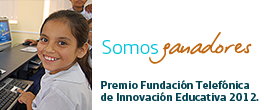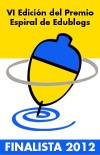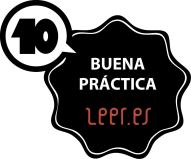In this new mission, students had to guide Fawkes through the Chamber of Secrets so that he could deliver the sword to Harry. Thus, for each level passed, some magical lamps lighted up to mark the way. This time, students in Level 3 completed a short fact file about a wild animal and wrote a... Seguir lendo →
WASHING LINE
This week we've been reading "Washing Line" by Jez Alborough. The elephant and his friends guess who each of the pieces of washing on the line belong to because of their shape or size, and then there's a surprise at the end. https://youtu.be/1FY5mdF57s8?si=YkpMGDvYVIb2qUJO The children joined in the conversation about the pictures, guessing who the... Seguir lendo →
COMPARATIVE GAMES
Are you ready to leran comparative adjectives with these fun comparatives games? Here you have some activities that are great for introducing or reviewing comparative adjectives with beginner English language learners. Drag the adjectives into the correct category.(OPEN THE ACTIVITY HERE) https://wordwall.net/es/resource/70946677 What do you know about Harry Potter? Read and choose the correct comparative... Seguir lendo →
ADJECTIVES GAMES
What do animals look like? Can you describe them? Let's learn some adjectives you can use to do it. Click on the picture Now, try to use them completing these sentences. https://wordwall.net/es/resource/70908828
Simple Past games
Do you want to practise the Simple Past Tense in a fun way? Try these games and review the Simple Past tense grammar rules as well as the spelling rules and the Past Tense -ED pronunciations. Open the cages. Look and say. What did they do yesterday? https://wordwall.net/es/resource/70339530 Look and choose the correct option. https://wordwall.net/es/resource/4901404... Seguir lendo →
Toys wheel
If you are teaching how to ask and answer about toys, you can use our new spinner. It focuses on the vocabulary worked in our unit 4 (teddy, car, game console, doll, ball, scooter, robot and plane). Students in Level 2 made it last week. They traced, coloured and cut them, but previously, we practiced... Seguir lendo →
HOGWARTS MISSION 3: A BOOK REVIEW
Easter is around the corner and we will have time to relax and recharge body and mind for the coming term. What don't spend our free time reading a good book? If you are not sure which one to choose, student in Level 5 can recommend you some books. Pascua está a piques de chegar... Seguir lendo →
MY MUM IS A POWERFUL WITCH
To celebrate 8M, we dedicated Mission 3 to all the mums in class 4. Just like every year, we knew, learnt and recognized some women’s labour in different areas but, in the English class we focused on some special women, OUR MUMS. We wanted to celebrate their achievements and increase visivility of their work as... Seguir lendo →
DO YOU KNOW? EPISODE 1
Do you know? is our own television serie in which students explore interesting facts from every city across the globe or about every topic that they can be interested in. Do you Know? é o noso propio programa televisivo no que os alumnos exploran feiros interesantes de calquera cidade do mundo ou sobre calquera asunto... Seguir lendo →
Old McDonald had a farm activities
Old MacDonald is a song kids love. Are you ready to discover all of the fun animals on Old MacDonald’s farm. This Super Simple version of the classic nursery rhyme, Old MacDonald Had A Farm, adds some useful language for talking about animal sounds with kids ("What does a pig/ cow/ duck/ horse say?"). https://www.youtube.com/watch?v=5oYKonYBujg... Seguir lendo →
Let’s go on an Easter hunt
Easter is just around the corner, and it’s a time to celebrate in the classroom. A great way to do this is with this easter book! The Very Hungry Caterpillar is at the farm hunting for tasty Easter eggs . . . Meet friendly farmyard animals and lift the flaps on every page to help... Seguir lendo →



























